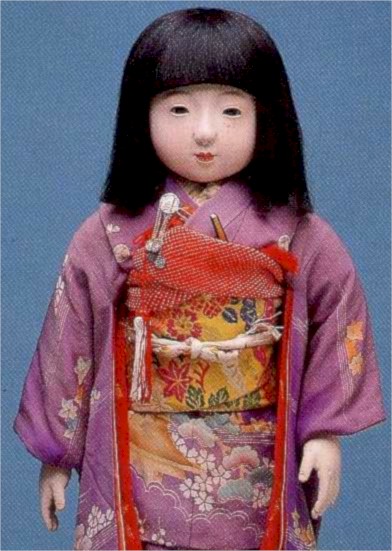 Location Idaho State Historical Museum (Boise) A
History of Miss Nara In the mid-1920s, Japan was experiencing a great depression that was soon to reach the United States. Relations between the United States and Japan were strained. The United States was fearful of a large influx of Japanese labor into this country and the possibility of war with Japan. Dr. Sidney Gulick, who had lived in Japan, contacted the Federal Council of the Churches of Christ to see what action could be taken to ease the tension between the two countries, and the result was the Doll Messengers of Goodwill project. Over 12,000 dolls, with blue eyes and "mama" voices were donated by the children of the United States. The dolls arrived in the spring of 1927 in time for Hina Matsuri, or Doll Festival, which is celebrated on March 3 each year. The Japanese Ministry of Education distributed the dolls to schools throughout Japan. This was the first contact that some remote areas of Japan had with a culture from outside Japan. The American "Doll Messengers of Goodwill" were covered by major newspapers in both countries. Although thousands of letters thanking the American children were sent by the Japanese, it was felt that letters were not enough and to express their gratitude the Japanese Committee on International Friendship Among Children was formed. The Committee decided to send Japanese doll messengers to the United States, and arrangements were made to have the dolls reach the United States before Christmas 1927. Fifty-eight dolls were sent as messengers, one from each prefecture, and one from each of the six largest cities in the empire. The most elaborate doll, Miss Japan, was sent from the Imperial household to the District of Columbia. The dolls were made by the house of Yamada in Tokyo which has made dolls for the Imperial household for hundreds of years. The dolls stand 85 cm high, have movable arms and legs, glass eyes, and human hair. Each doll was accompanied by miniature tea ceremony utensils and other accoutrements used to celebrate Hina Matsuri. The dolls left Japan with much ceremony in November 1927 on the steamship Tenyo Maru. After arriving in San Francisco, the dolls were distributed to the different states. The Committee on World Friendship Among Children requested that the Idaho State Historical Society become the guardian of Miss Nara, and she was sen to Idaho on January 22, 1928. The doll was exhibited throughout the state during 1928, primarily in store windows, before returning to Boise. Miss Nara was exhibited in the State Museum, then in the basement of the statehouse until the museum moved to its present location in 1949. Sadly, the doll ambassadors did not succeed in their mission. Tensions increased between the two countries until all hope of reconciliation was shattered on December 7, 1941. In 1943, when the war turned in favor of the United States, an edict was issued in Japan that all of the goodwill dolls from America were to be destroyed. The dolls were smashed and burned. In the United States many of the Japanese dolls were taken off exhibit, some sold, and others put in storage. Miss Nara faired better than most and has been on exhibit periodically since her arrival at the State Historical Museum.
|
Photo of Miss Nara (after her restoration in 1994) and information on this web page provided by the Nara International Foundation.
Published with permission of the Idaho State Historical Museum.